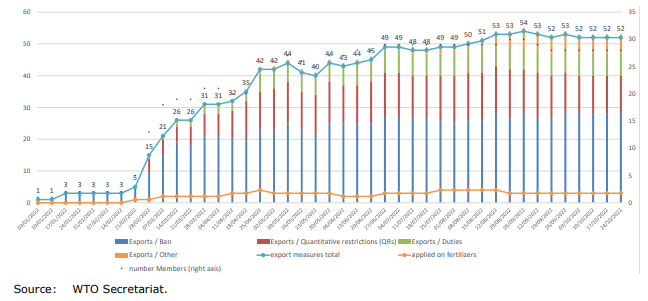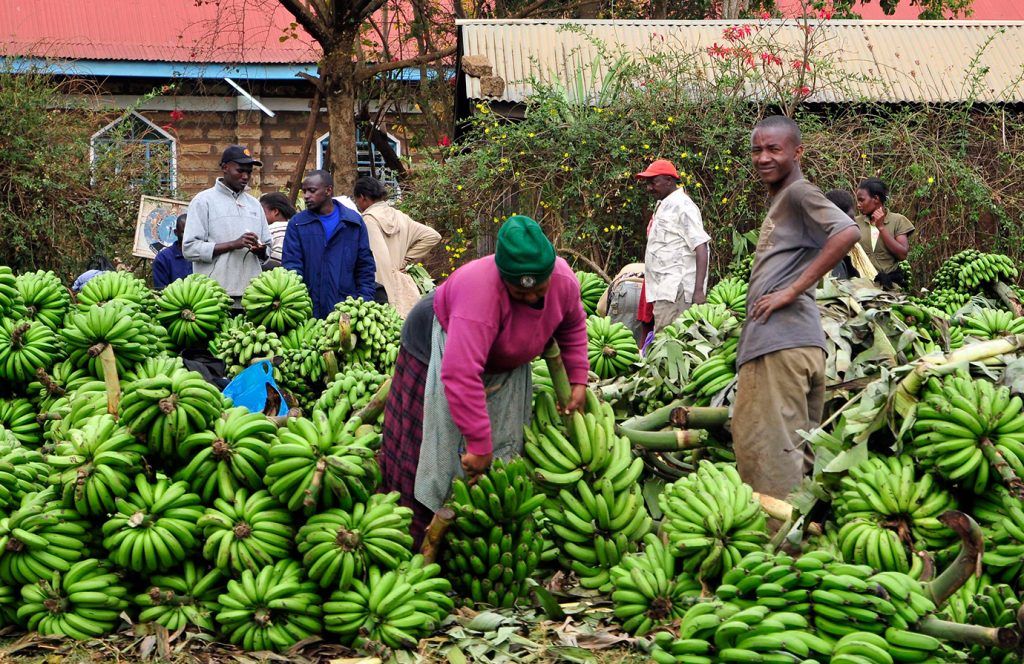The World Trade Organization (WTO) on Monday released an assessment of export restrictions on food, feed and fertilizer.
Since the outbreak of the war at the end of February 2022, the WTO Secretariat has identified 72 trade restrictive measures introduced by 26 WTO members and five observers on key agricultural products, of which 66 applied to food and feed (90 percent) and six targeted fertilizer exports (10 percent).
Number of export restrictions on food, feed and fertilizers, in force by mid-October 2022
By mid-October 2022, 20 of these export restrictions had been removed, bringing the number of restrictions in force to 529, of which 23 were export restrictions maintained by G20 economies.
During the first three months after the outbreak of the war, export restrictions were directed mainly at a relatively limited range of agricultural products, including grains (both for human consumption and animal feed), sugar, vegetable oils and fertilizers.
Food
Later, the scope of export restrictions was expanded to also include, for example, rice, poultry and poultry products (eggs), meat and milk.
Export restrictions during the early months of the conflict often referred directly to the war, while later, reference was made to security of domestic supply and price stability.
This may suggest that more recent export restrictions were introduced in response to a growing food crisis, which has been exacerbated by the war in Ukraine.
These restrictive measures may also have been introduced to protect domestic markets in the context of multiple interconnected crises arising from declining agricultural yields due to the adverse effect of climate change, the Covid-19 pandemic, rising energy costs and inflation.
Despite increased export restrictions associated with the war in Ukraine, some Members had already implemented measures restricting the export of key agricultural products in late 2021 and early 2022, prior to February 24, 2022.
For example, temporary export bans on a number of agricultural products were introduced due to abnormal drought or rising prices of agricultural products on the domestic market in several countries in Asia, Africa and Latin America.
The nature of export restrictions diversified over time. Initially, most restrictions took the form of export bans, while later they included export licensing requirements, quotas or export duties.
Often, less restrictive measures replaced earlier bans on the same products.
![]()

